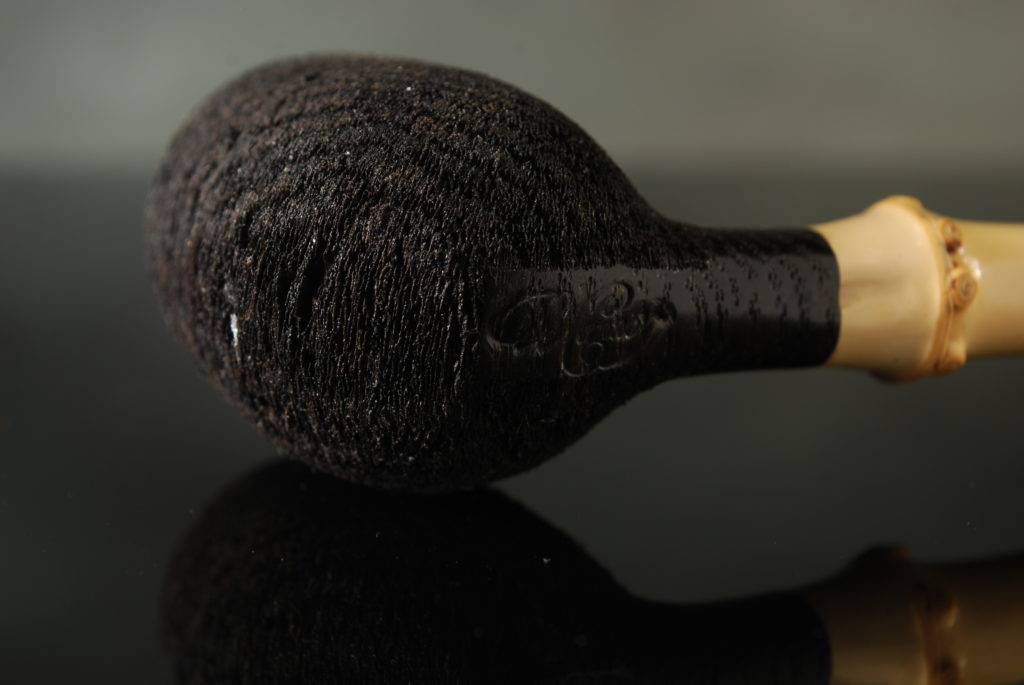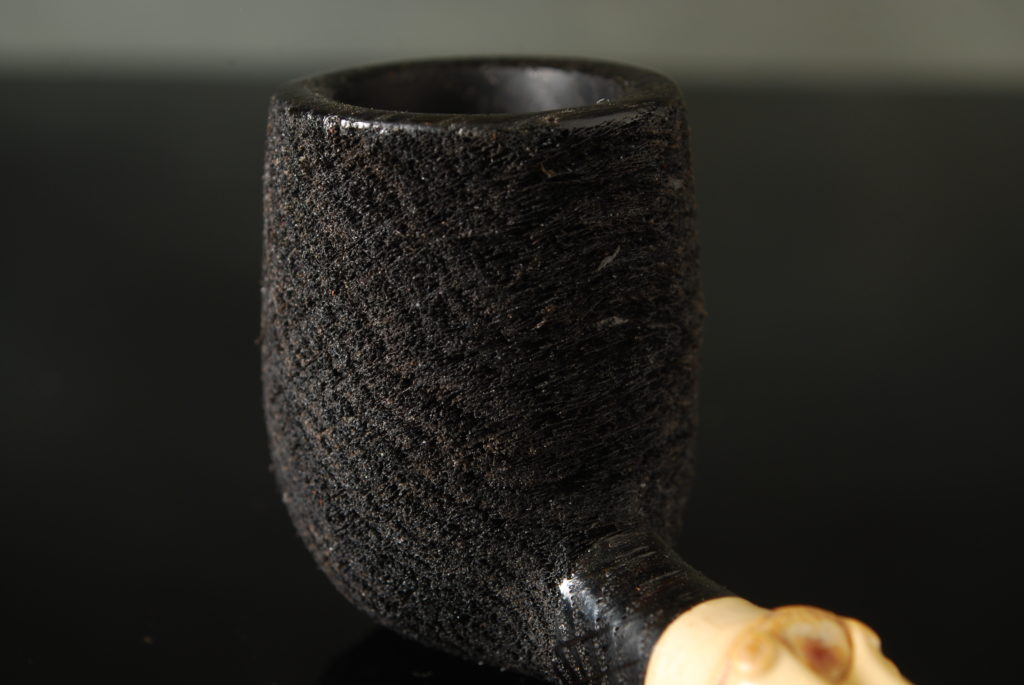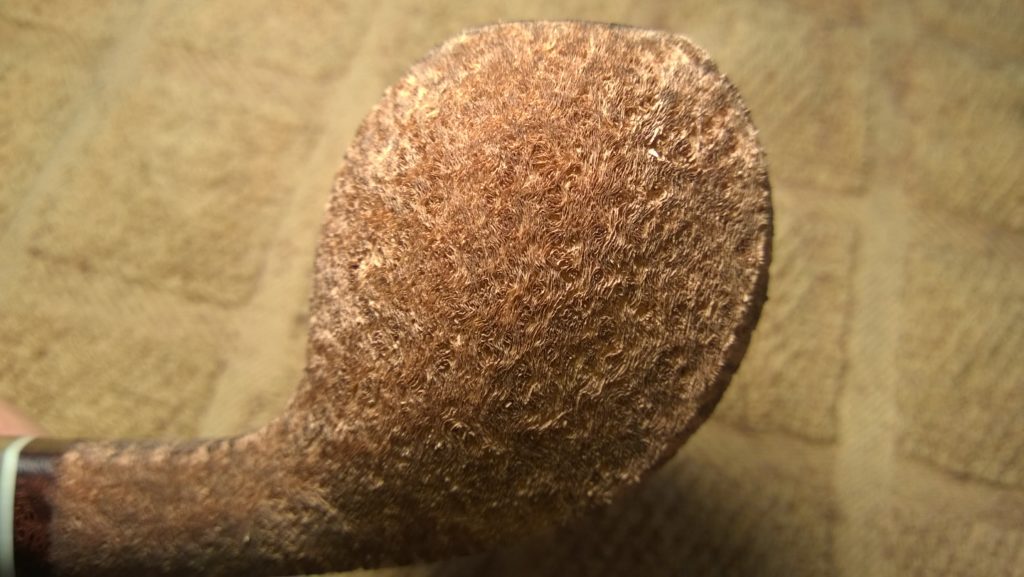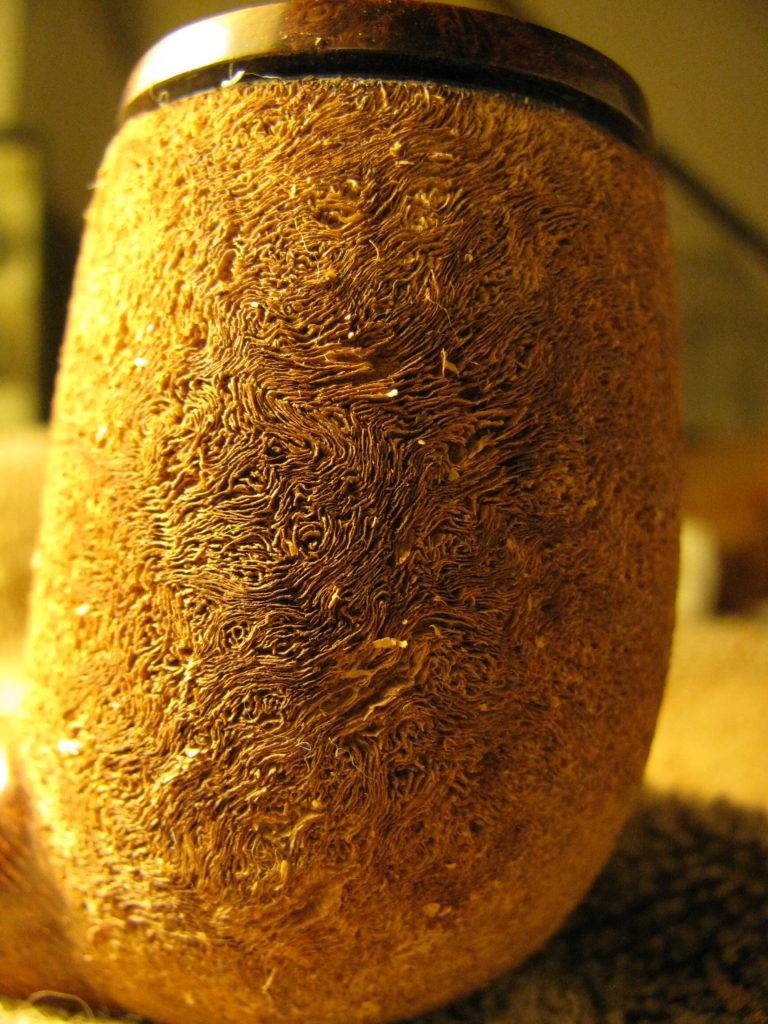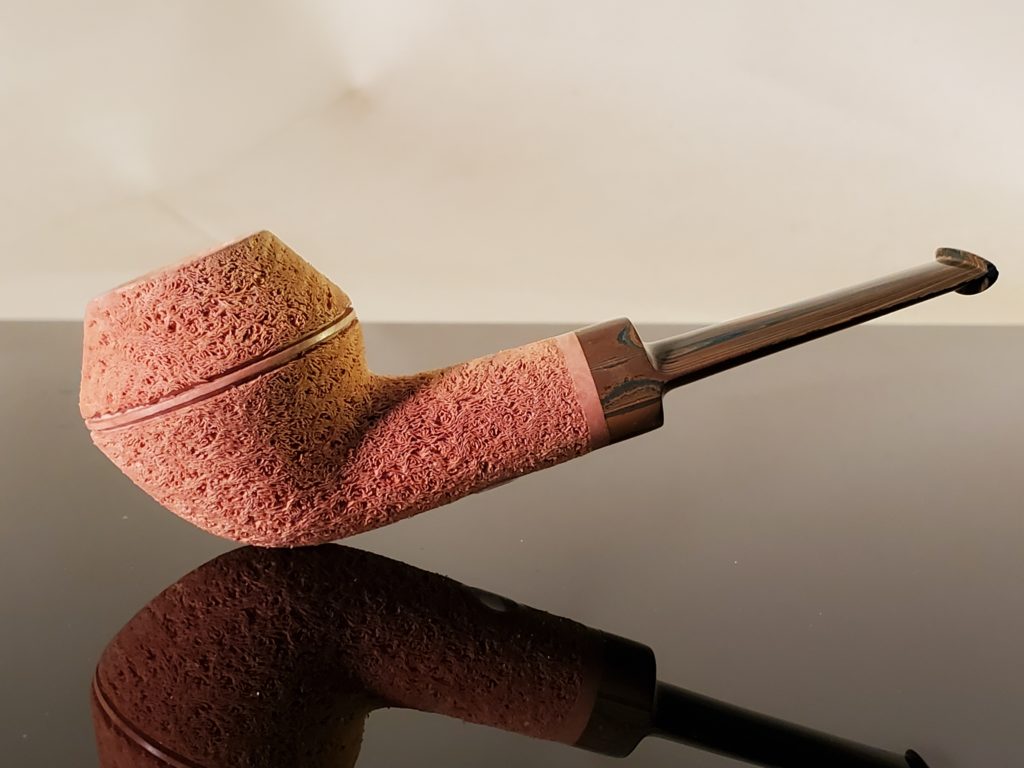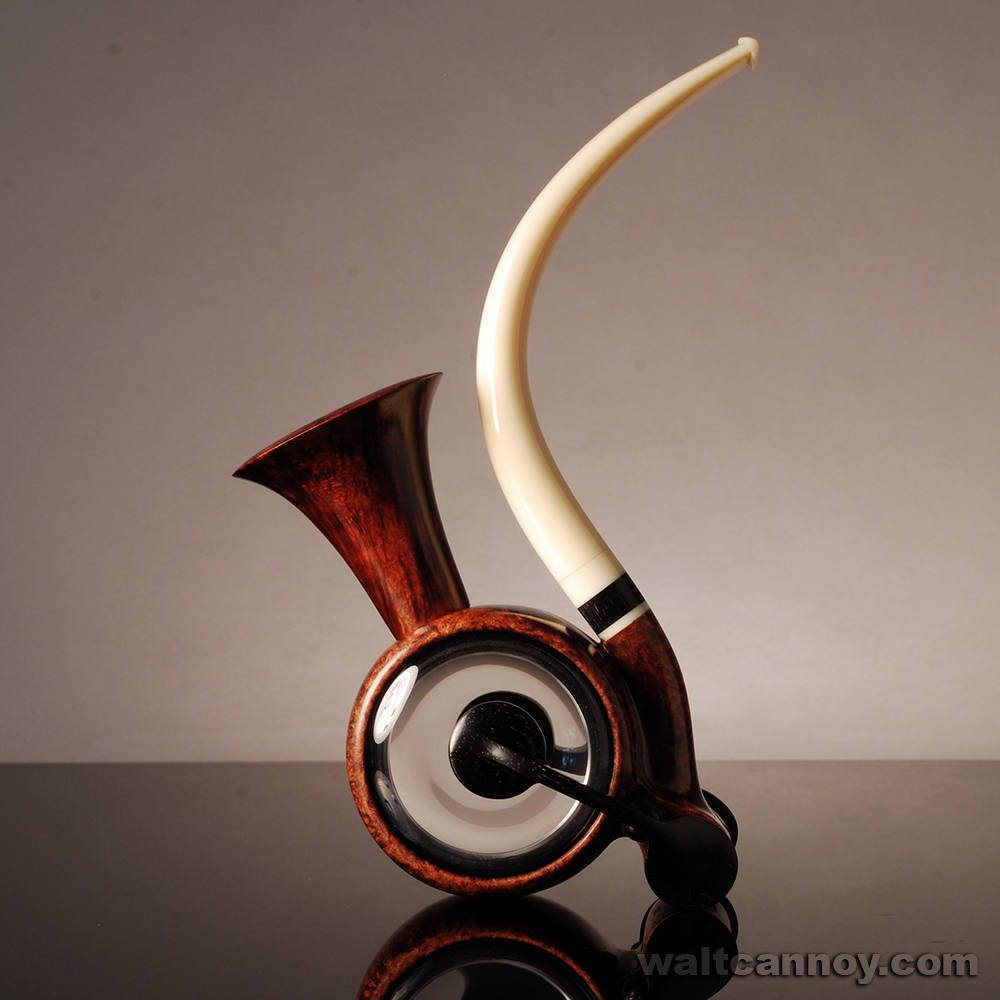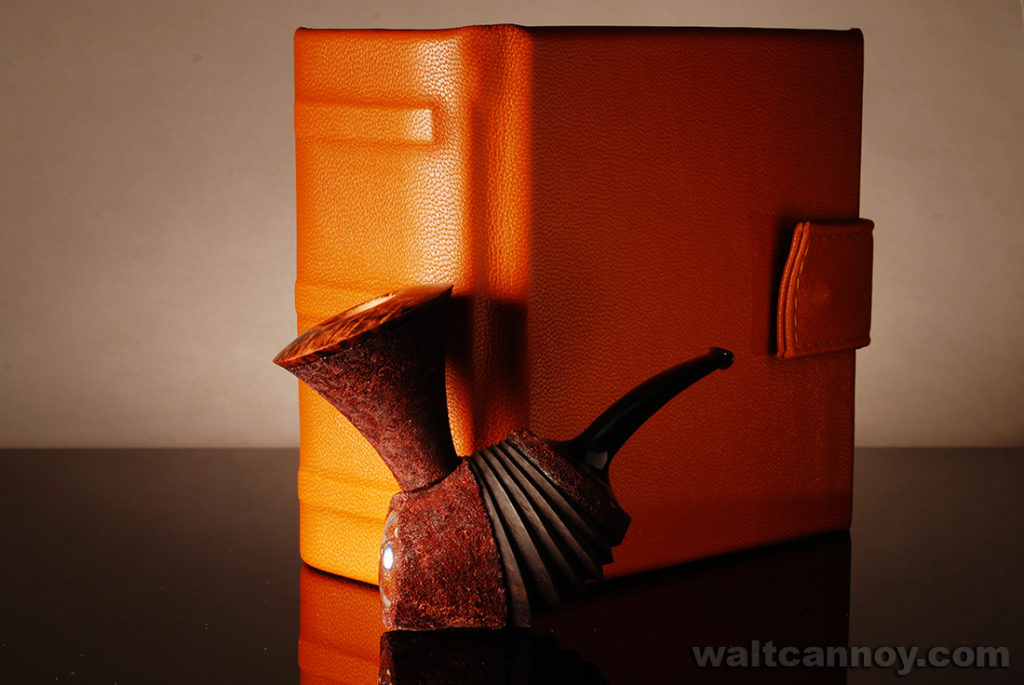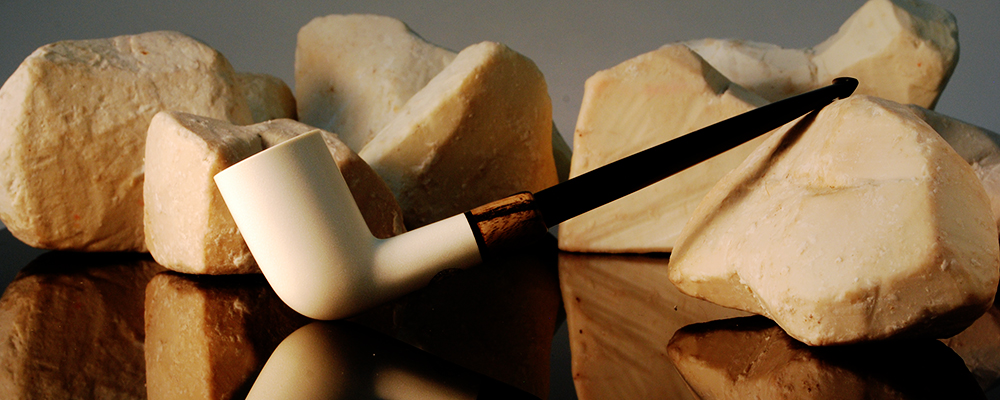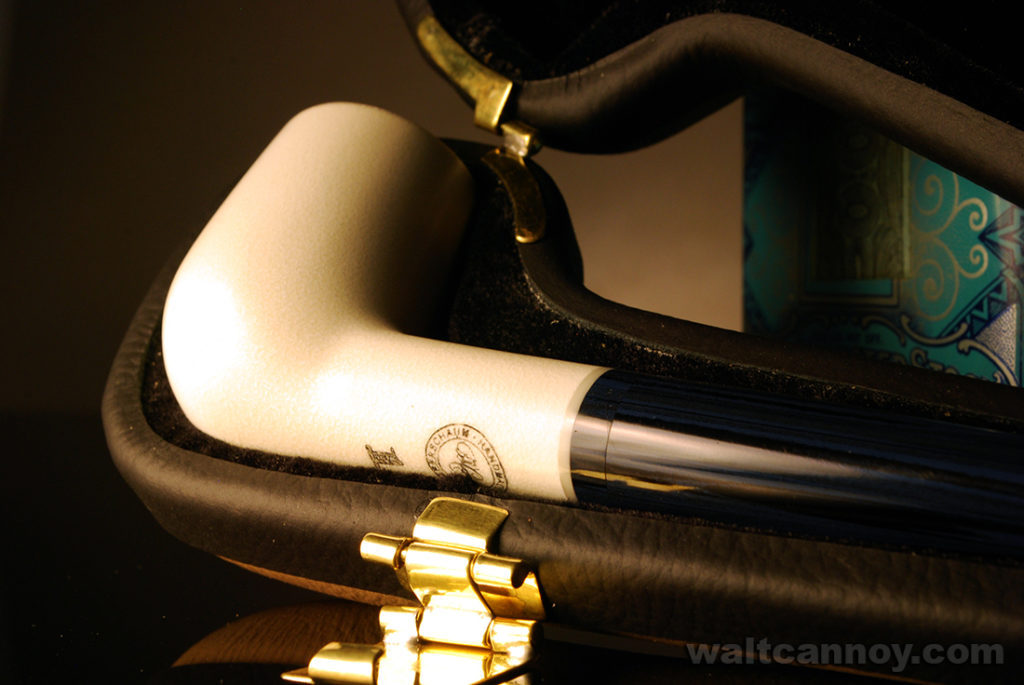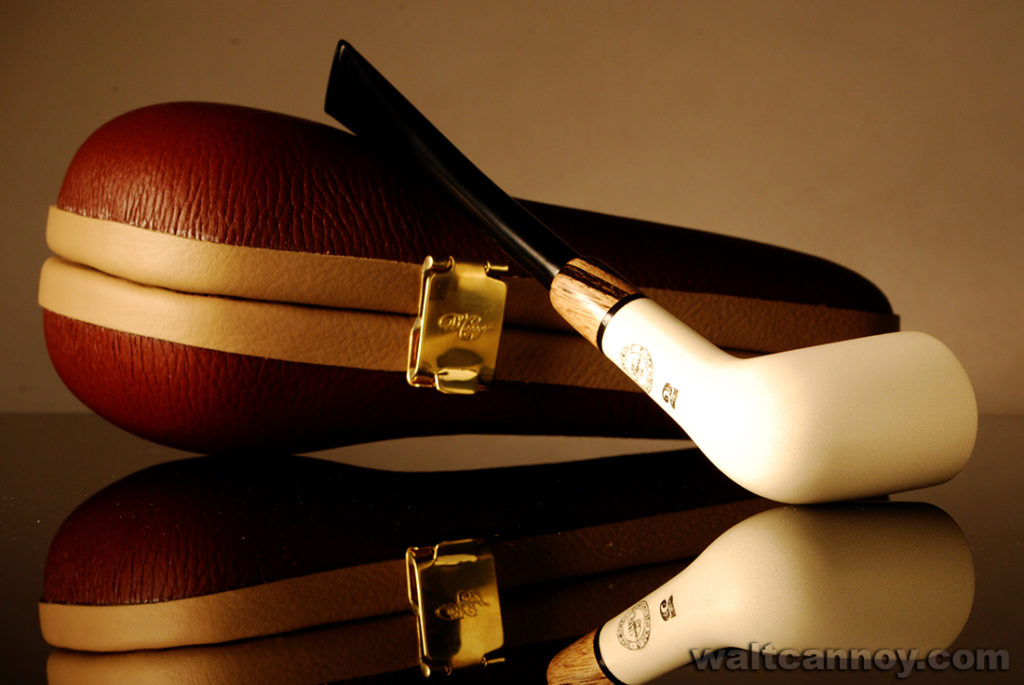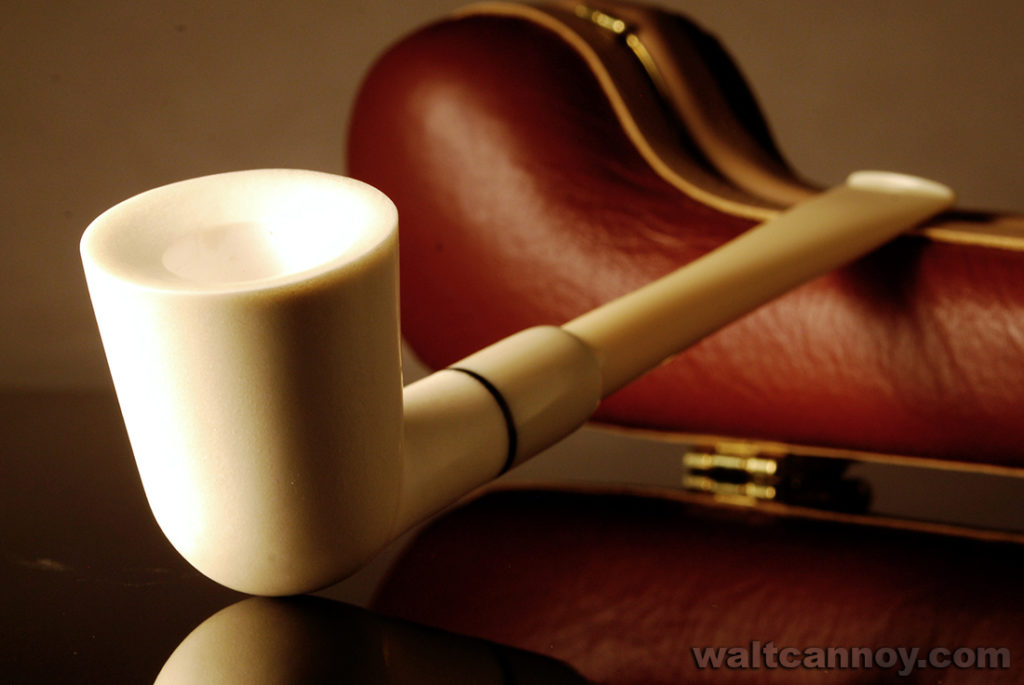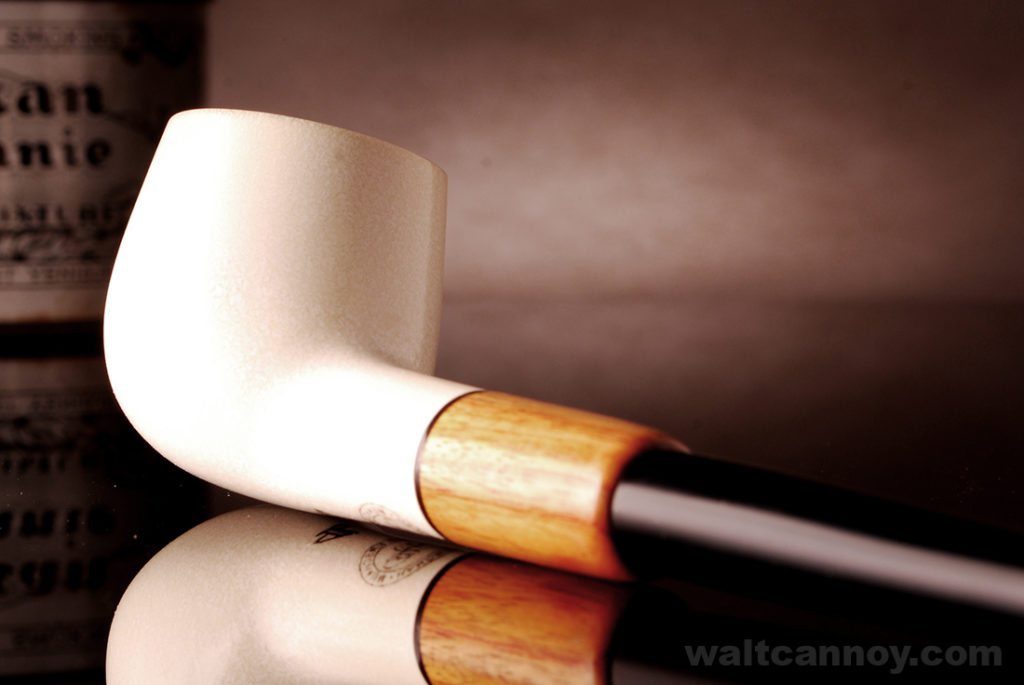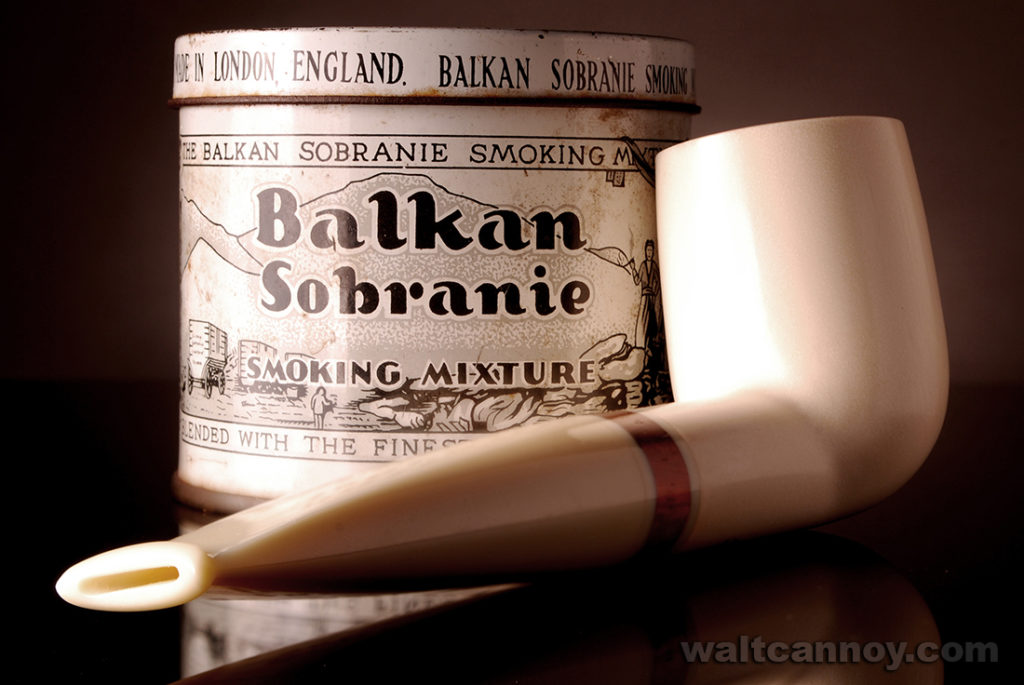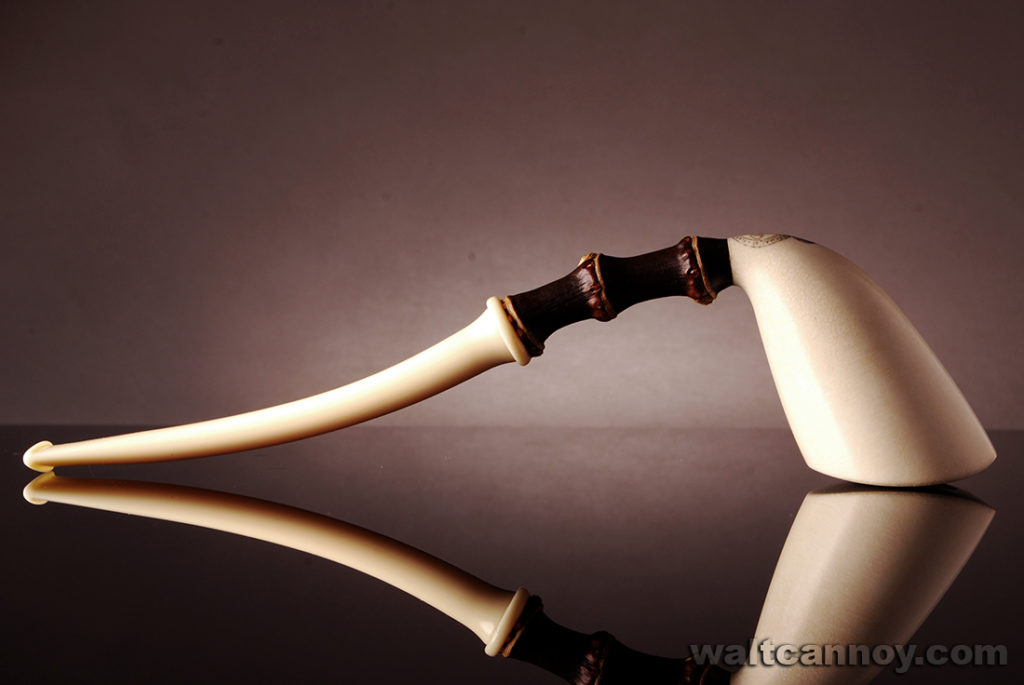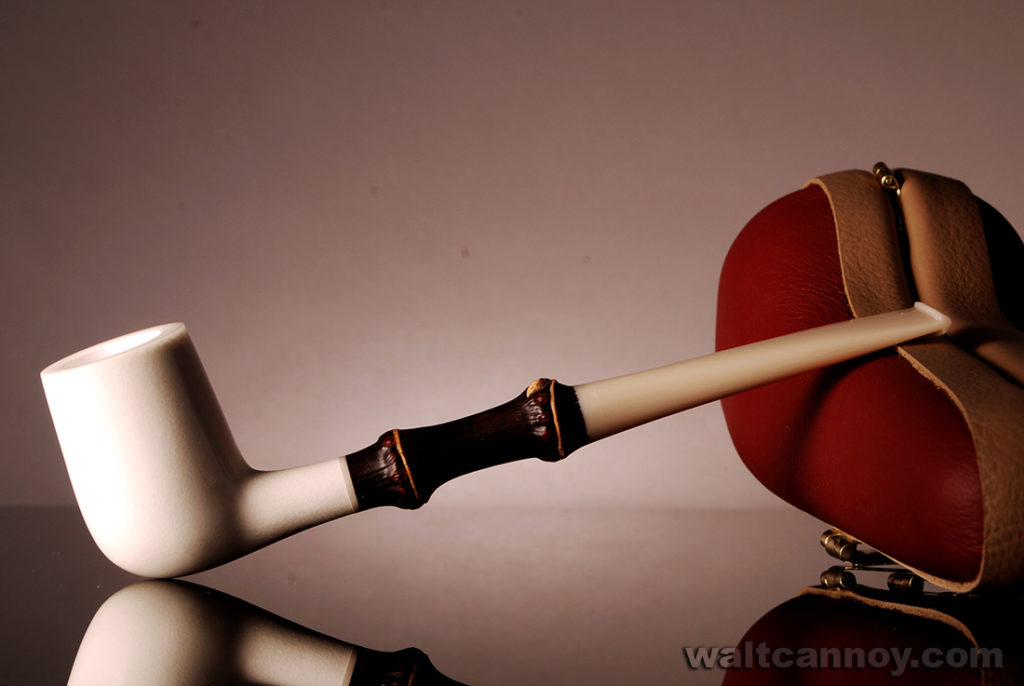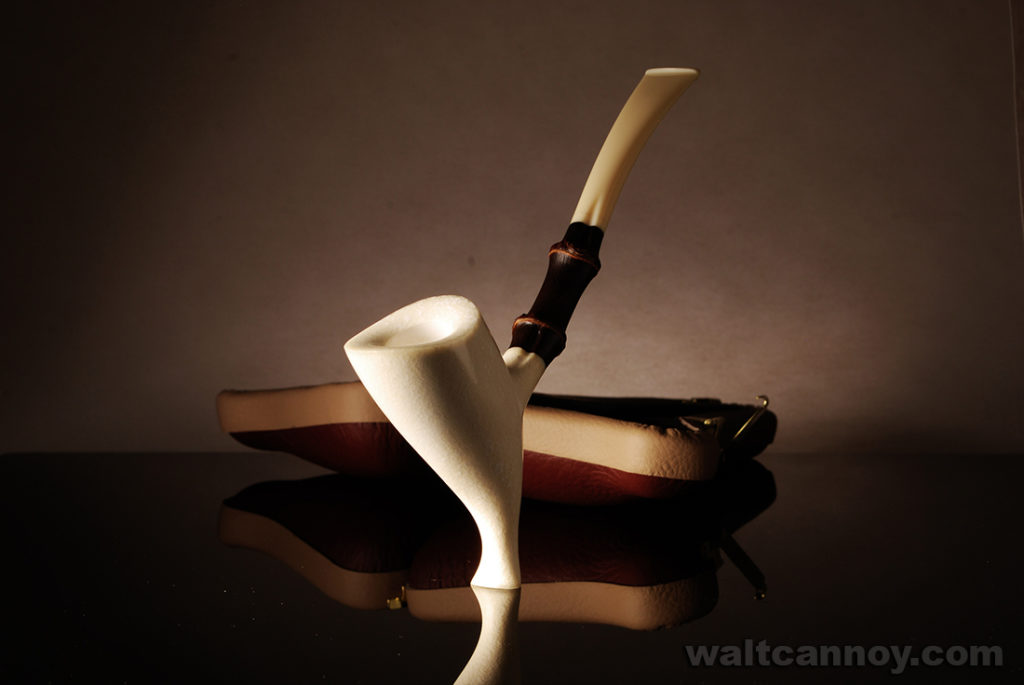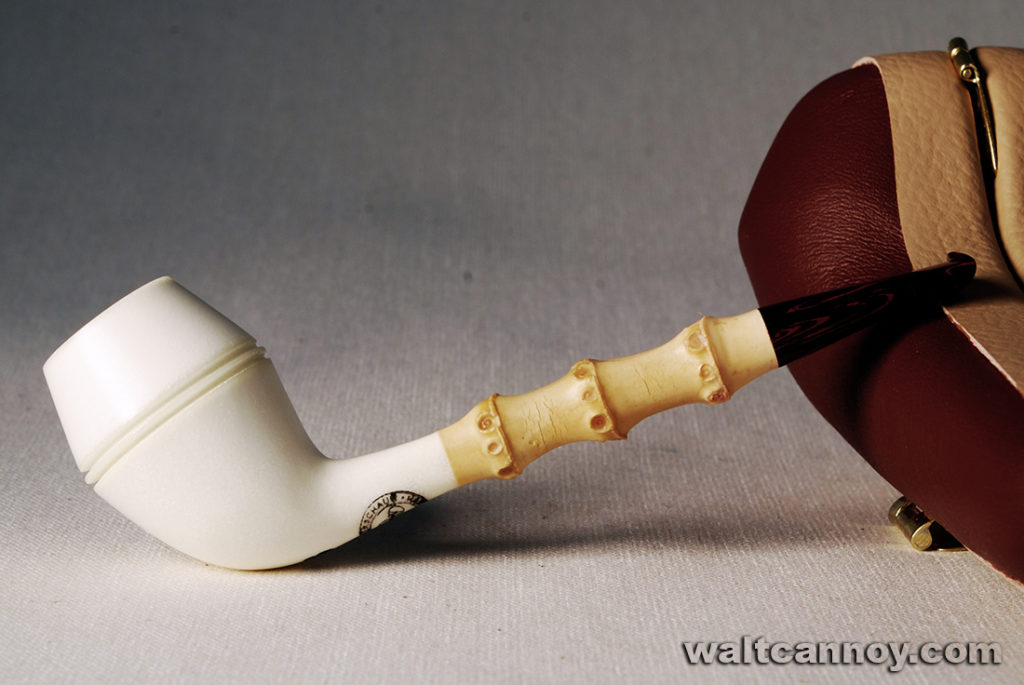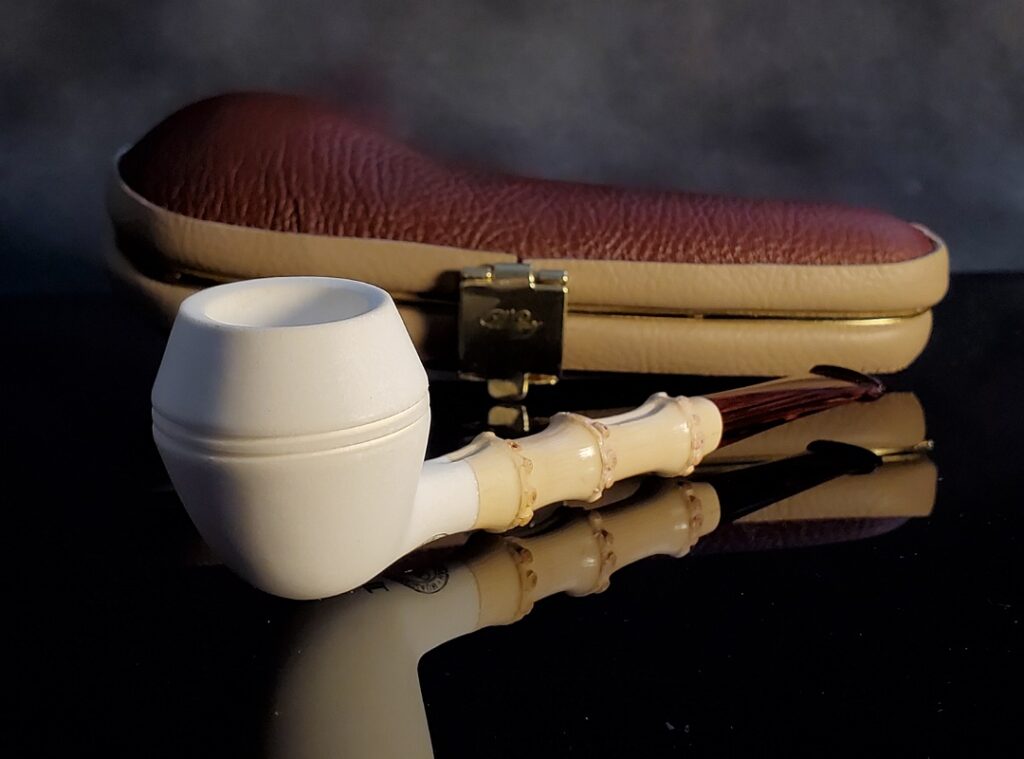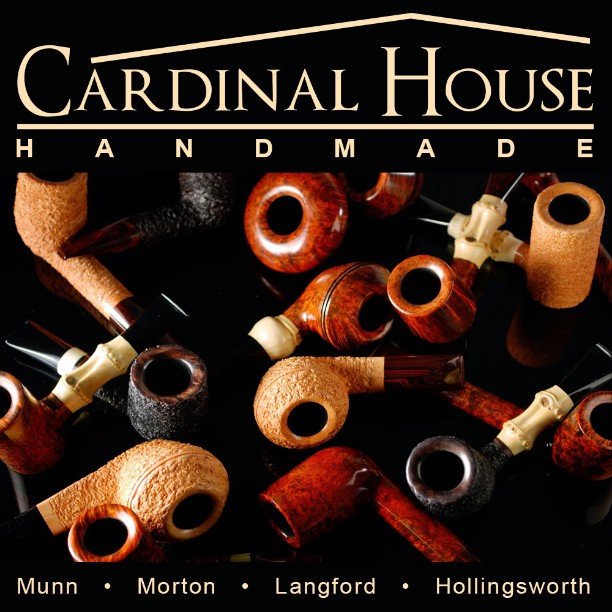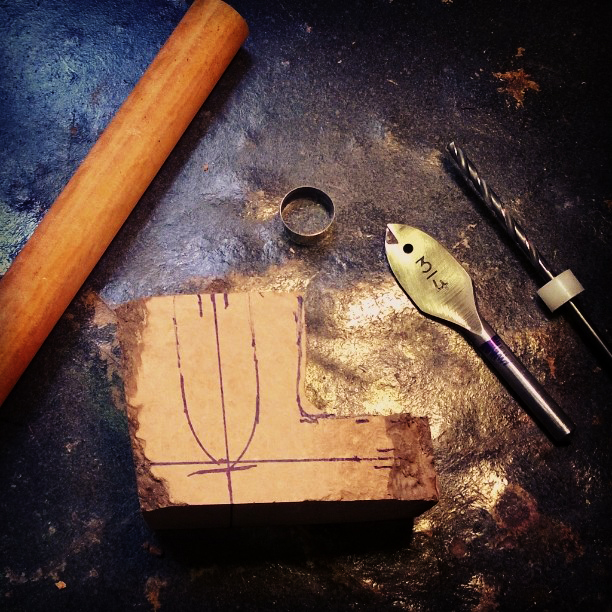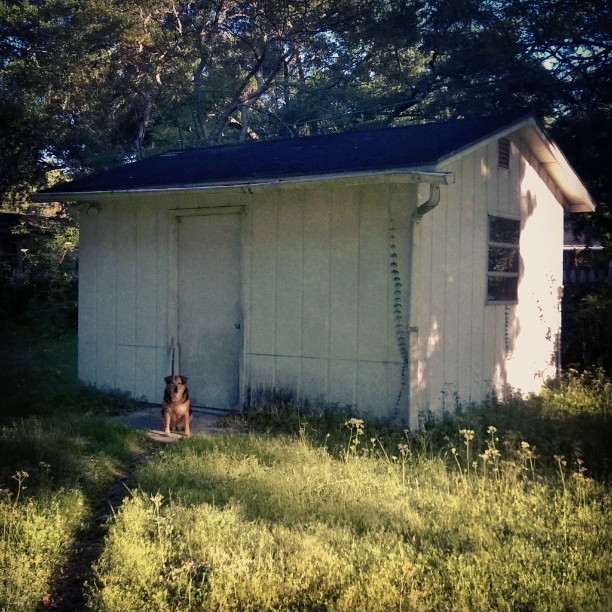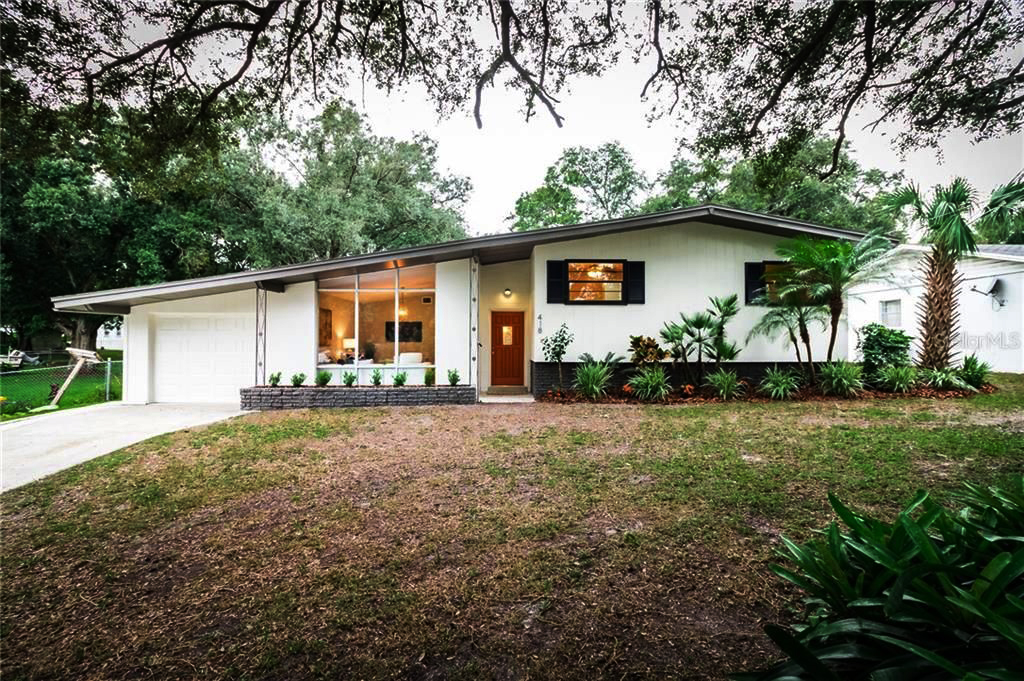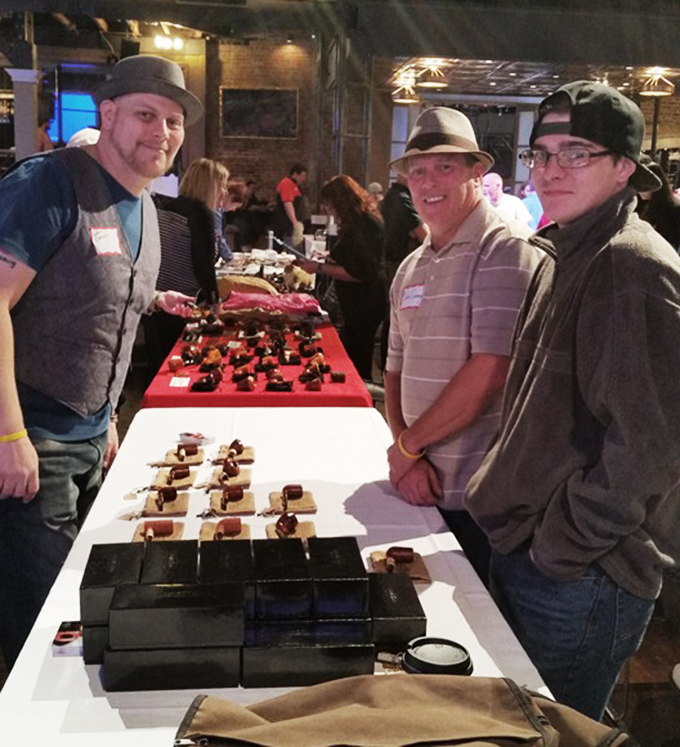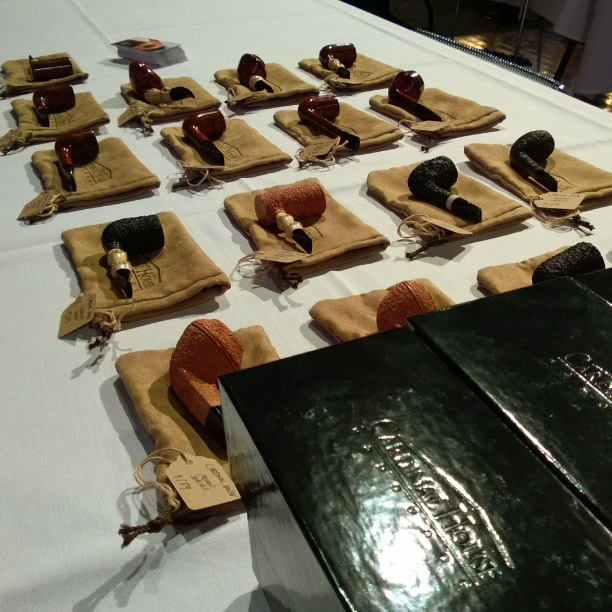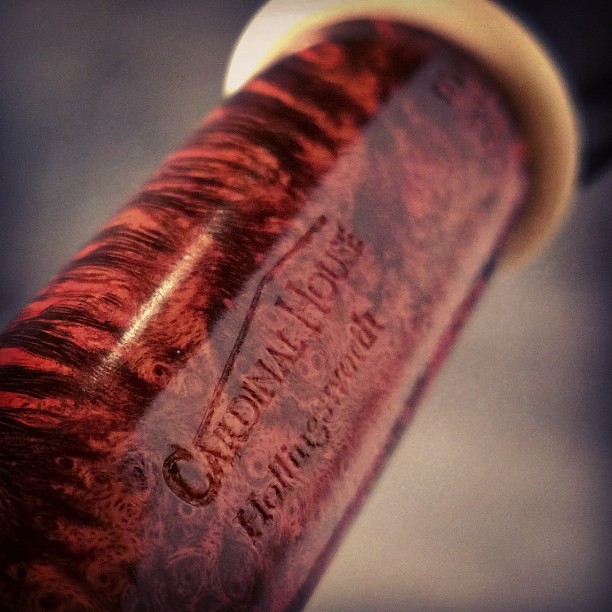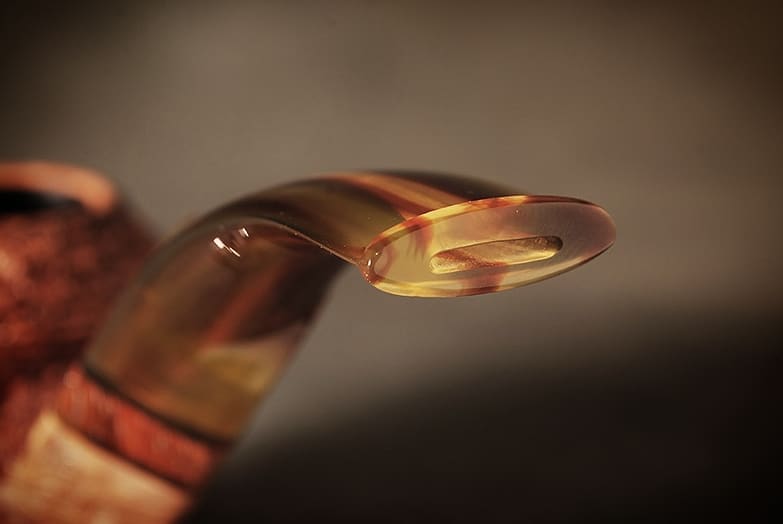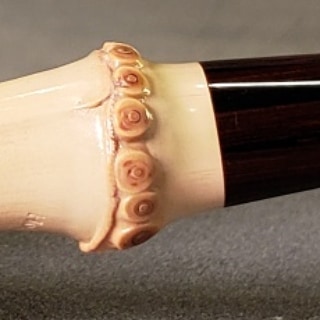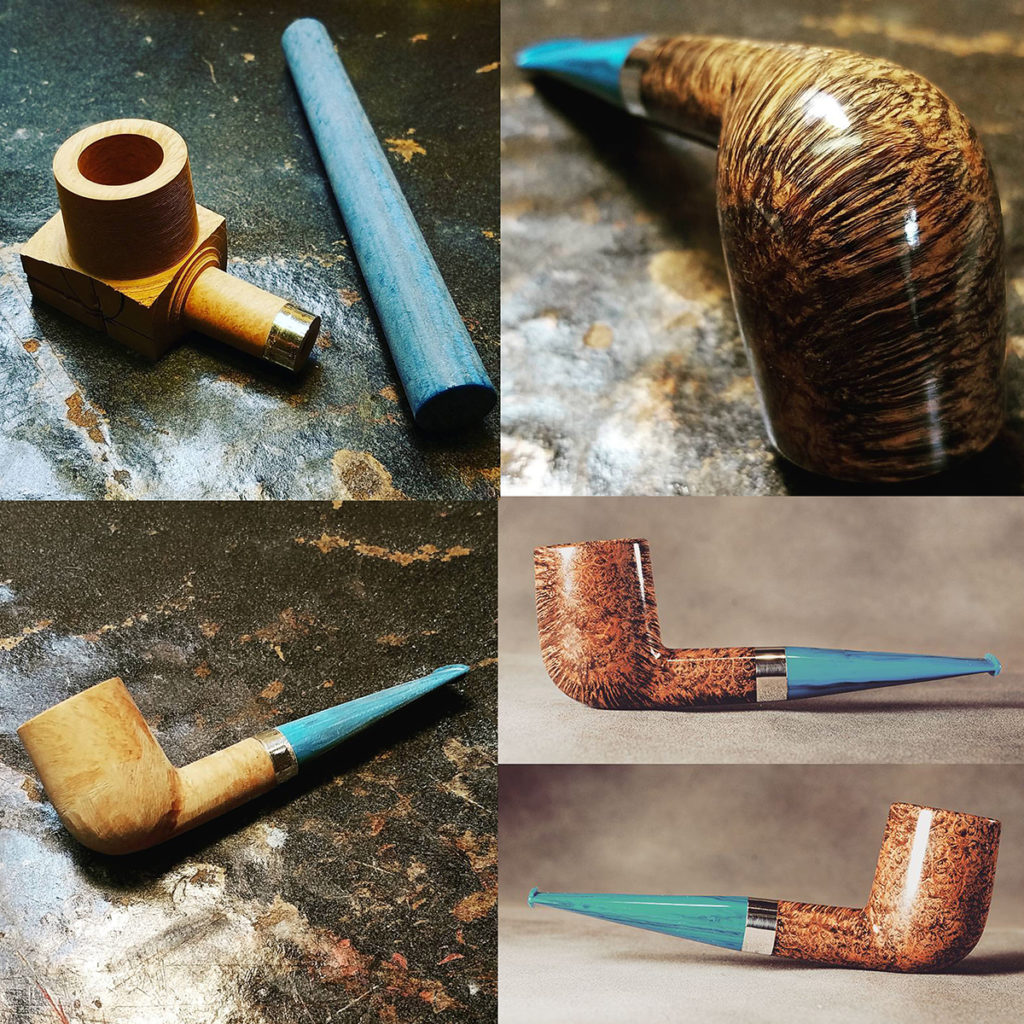I can hardly think of my (circa 2009-ish) hiatus from pipemaking as actually being away from the art completely. There was never a day that I didn’t think about pipes in one way or another. Pipemaking had been permanently ingrained in my soul.
Throughout that time, I had plenty of time to think about new techniques and processes to bring to the art of pipemaking. It is quite difficult to develop a new style that is unique, attractive, versatile, has a broad range of appeal, and has never been seen before in the pipe community. But there are rare instances, just when you think that everything that can be done to a pipe has already been tried, that an innovative new style shows up to raise the pipemaking bar once again. This is that innovation.
I present for your consideration, the Suede Blast finish. A blast so deep, fine and detailed, bold and dramatic, but smooth and pleasing, rustic yet refined…
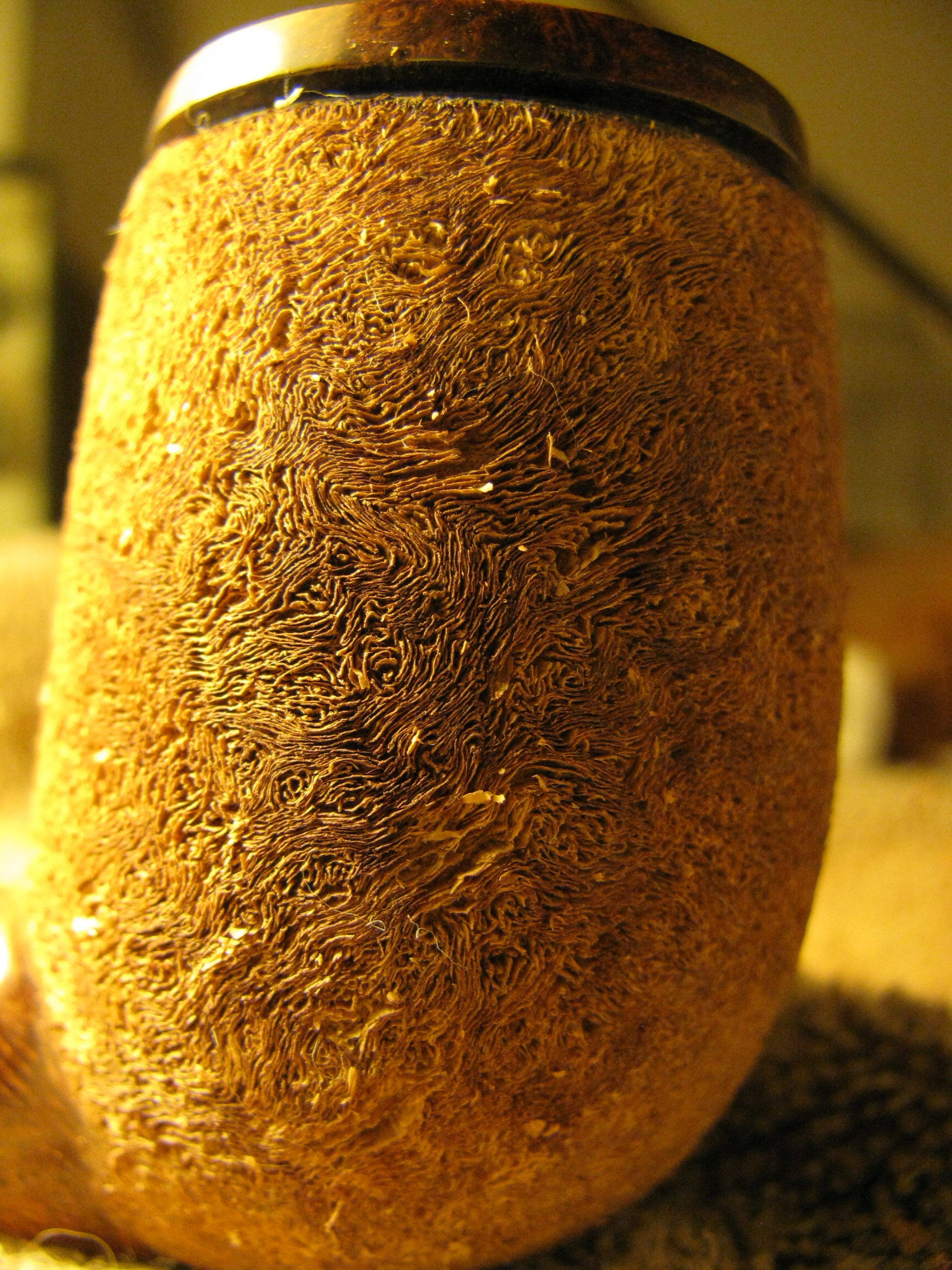
The Cannoy suede blast is a unique evolution of the traditional sand blasting process that further defines the natural grain of the briar. The result of this new process is an elegant texture reminiscent of a suede look, and quite pleasing to the touch. The texture literally shimmers in the light with ever-changing directional highlights, reflecting light much like fine velvet.
Although the appearance can be compared to many frail and delicate fineries, have no doubt that it is a rugged finish with no need for special handling or treatment.
The Suede Blasting process is, of course, a closely guarded secret. The mechanics of the process are nearly identical to traditional sandblasting, but equipment, media, and methods are vastly different. Additionally, the process involves much more time than traditional sandblasting. A small billiard, for example, can take up to eight hours of blasting to achieve this result.
Look for the Cannoy Suede Blast pipes to be available beginning in 2013, but in the mean time, click on these photos for a closer look!


